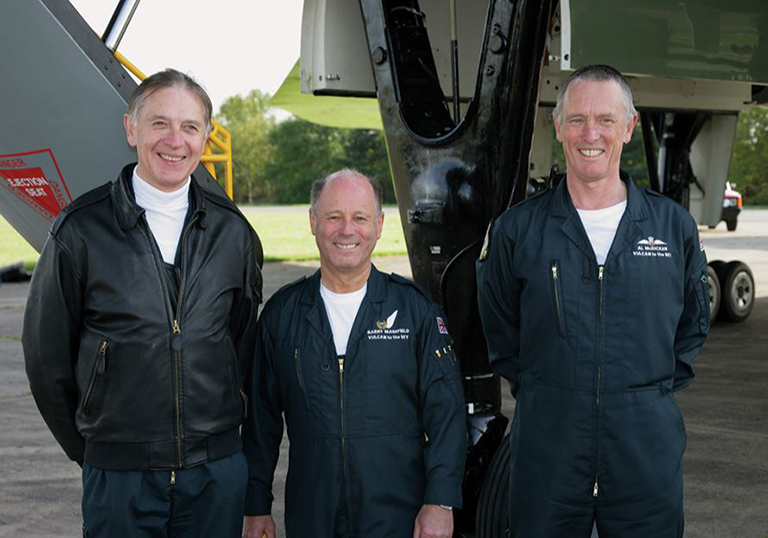
Ramblings from the AEO’s Panel – Part 3
Barry Masefield was the Air Electronics Officer (AEO) for Vulcan XH558 and had flown in this iconic aircraft for over 30 years, also being a key
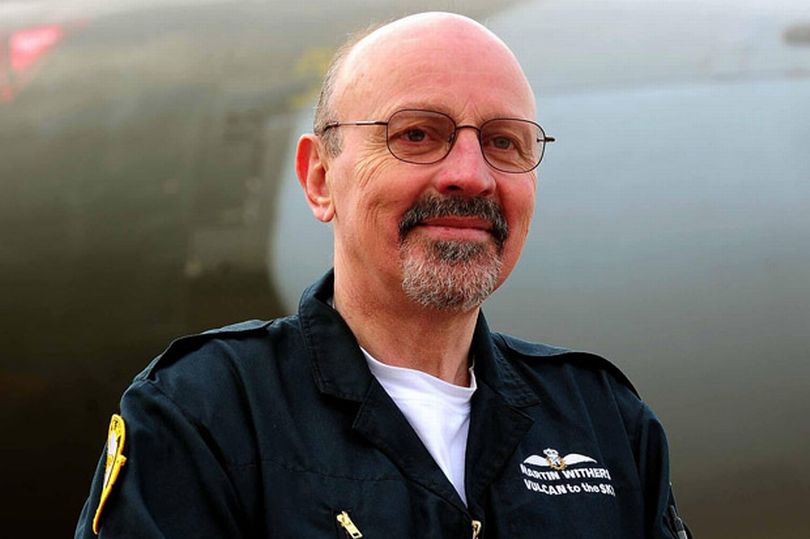
Reproduced from The Vulcan(Club Magazine) 23 Apr 08 Martin Withers
Recently, during one of her campaign speeches, I heard Hilary Clinton state quite simply about her defence policy, that if Iran were to launch a nuclear attack on Israel or any other country, “we would obliterate them”.
This is the language of the Cold War. USSR v USA (NATO) – a contest which neither side could win, because each knew that the other would retaliate against any nuclear attack with enough force to destroy the other.
While the V-Force, from its inception, represented Britain’s nuclear deterrent, gradually the only V-bomber remaining was the Vulcan. The Valiant had a short service life and the Victor was not strong enough to adapt from a high-level to the low level role necessitated by the development of Soviet missile systems.
However by this time, we required fewer bombers because our primary nuclear weapons were the submarine launched Polaris missiles.
This was the state of play when I joined 44 Sqn at RAF Waddington in 1971. There were only 3 Vulcan bases remaining, Waddington, Scampton and Akrotiri (Cyprus), and a total of 7 squadrons plus the OCU.
Each squadron would normally have 10 crews, and with 5 men on each crew, this represented some 350 V-force aircrew around at any one time. It is no wonder that we never got to know everyone on the force. But there were always plenty of people in the bar on a Friday night and always enough for a party to celebrate any occasion.
Life at Waddington when I arrived there was sweet. There was plenty of friendly rivalry between the squadrons, we worked mainly between Monday and Friday, unless we were making trips abroad to Canada (Goose Bay), the USA (normally Offutt, the home of SAC HQ and the B52), or Cyprus (before the partition and the influx of Package Holidays).
We only had a training role, so did not fly more than about once a week, interspersed with the odd simulator trip, war target study and other ground training exercises. From time to time we would exercise our war role, particularly on NATO Tactical Evaluation Exercises (TACEVALS). Looking back on those days life really was not hard!
To many people it must be difficult to appreciate what it was like to fly a bomber which was without doubt a ‘weapon of mass destruction’.
I never knew of anyone who had any sleepless nights worrying about the prospect of dropping a ‘nuke’. Quite simply, we trained hard to demonstrate to everyone that we had the skill, the knowledge and the determination to fly the Vulcan in all weathers, at low-level, day or night, avoiding soviet defences and deliver a nuclear bomb with sufficient accuracy to destroy our target (usually one of military significance).
By demonstrating this to the satisfaction of our lords and masters in the RAF, the rest of the Defence Staff and to our NATO chiefs (who valued the Vulcan highly as a ‘second strike weapon’), we knew that we were part of an effective deterrent.
We did not have to go to war to earn our keep.
If, however, Britain had come under nuclear attack from the USSR, I am convinced that we would have launched with absolute determination to hit our assigned targets with very little concern for our own safety, or for the devastating effects of our weapons. We would be aware that the deterrent role had failed, and that everything and everyone we cared about at home was very probably being destroyed as we pressed on to the target.
But fortunately, nothing like that happened. We concentrated on our careers and secondary duties, enjoyed the ‘lone rangers’ abroad, the social life on the squadron, (greatly enhanced by the ‘crew’ concept, which meant that each crew remained together for most of the 2-3 year tour and therefore wives and partners all knew one another extremely well), and of course, we all loved the Vulcan!
I continued to fly the Vulcan as a captain on 50 Sqn also at Waddington, which was when I learnt that the captain has to take the blame when things go wrong but also gets the praise when everything is going along well. But what we achieved was very much a crew effort at all times.
By 1980, I was a QFI and was posted back to the Conversion Unit (230 OCU) as an instructor, but the OCU closed soon afterwards as the squadrons were about to disband and I moved back to Waddington, as the Squadron QFI/ Pilot Leader on 101Sqn.
By this time, I was quite impressed with the way the aircraft was being flown. We were flying down valleys and hiding behind hills rather than maintaining straight lines over ridges (in order to reduce fatigue) as I had been used to four years earlier.
And then the Vulcan was called upon to do her bit in the Falklands, and my crew having been selected as the reserve crew on ‘Black Buck1’, ended up going all the way.
I am extremely proud to have played a major part in the first ‘Black Buck’ mission, which is all beautifully described in Rowland White’s book Vulcan 607. The whole mission involved so many people in its planning and execution, and would never have succeeded without the Victor crews all being prepared to ‘go the extra mile’, and the dogged determination of us all to adapt and remain flexible to achieve the task, in true RAF tradition.
The Cold War training had prepared us well for a low level strike on the USSR.
The Cold War training had failed to prepare us for a conventional bombing attack on the other side of the world against a completely new enemy.
However, since we succeeded, and played a significant role in the conflict, mainly by denying the Argentines the use of the runway at Stanley, we must have been well trained…
But very significantly, there was no other aircraft in our inventory (nor still is except for 558), capable of achieving what we did with the Vulcan in 1982.
Recently I was privileged to fly 558 on two of the test flights. This was an unexpected pleasure. As has happened so frequently up to now there was yet another delay in the return to flight schedule. Al McDicken was unavailable, and I benefited. David Thomas flew as captain, with me as his co-pilot.
It really was a pleasure to be back at the controls of the Vulcan after more than 25 years. I very quickly felt at home and was able to enjoy the surge of power, and the effectiveness of those huge control surfaces which made her able to out-manoeuvre the fighters of her day, and then the roar of those Olympus engines (Concorde) really got me excited. Most of all it is such a delight to share in the fact that 558 is flying again.
All credit to those who gave their time or money, or both, and to the hard core of dedicated individuals who would not give up. Thanks to them, I have flown a Vulcan again, something I never even considered back in 1983.
Now to this summer’s airshows and to the years ahead.
Reproduced from The Vulcan(Club Magazine) 23 Apr 08 Martin Withers

Barry Masefield was the Air Electronics Officer (AEO) for Vulcan XH558 and had flown in this iconic aircraft for over 30 years, also being a key
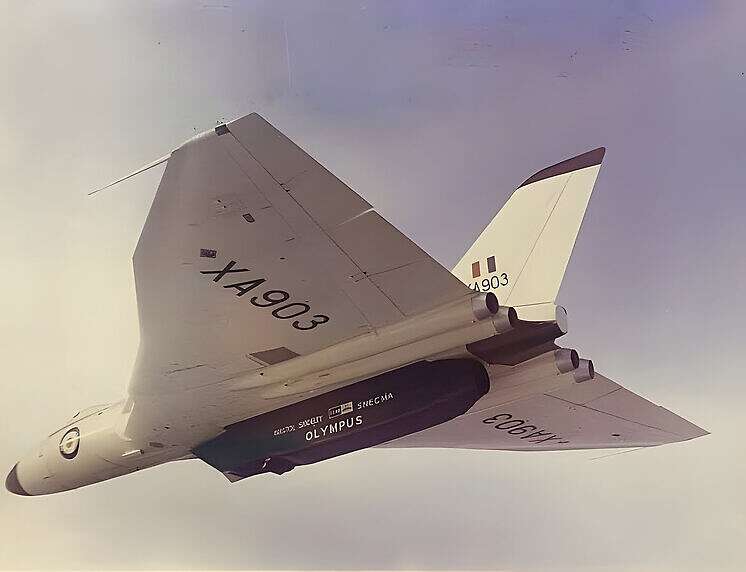
In the annals of aviation history, few aircraft have left a permanent mark like the Avro Lancaster and the Avro Vulcan. These legendary bombers, separated
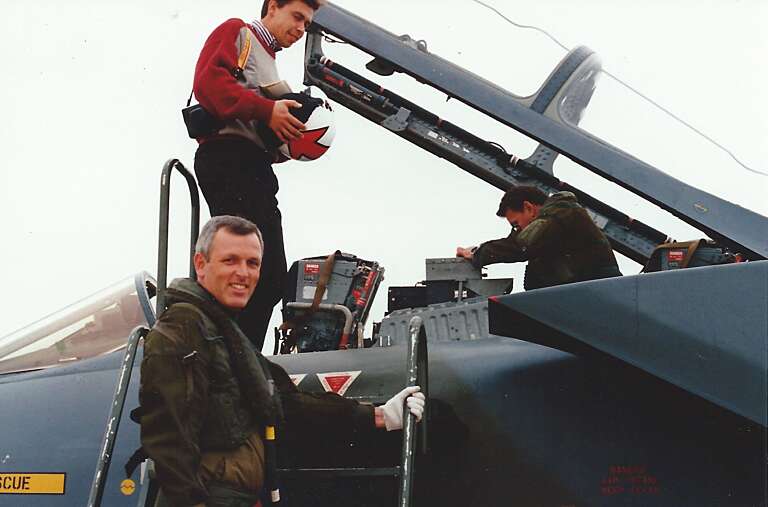
Personal memories from RAF Scampton, by Wing Commander Bill Ramsey Wing Commander Bill Ramsey, former OC RAFAT (Officer Commanding the Royal Air Force Aerobatic Team
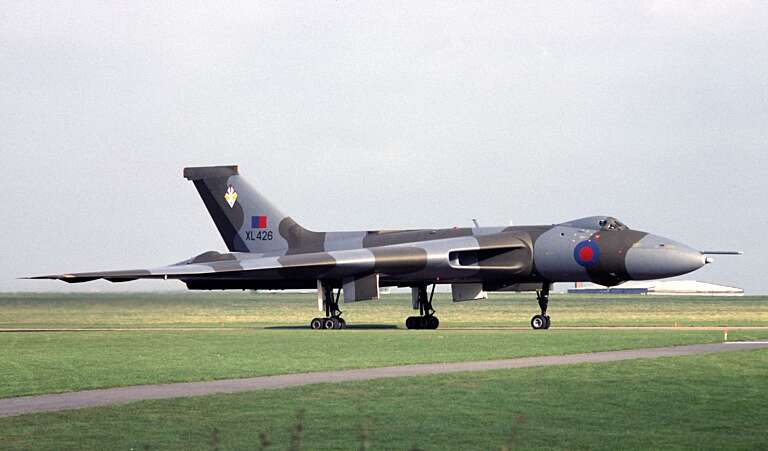
35 years ago, on 20 September 1986, Vulcan XH558 performed her first display at her former base – RAF Finningley. However, performing as the display aircraft for the RAF was a